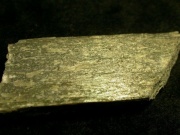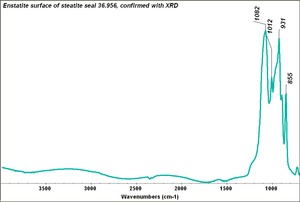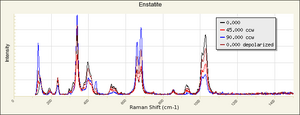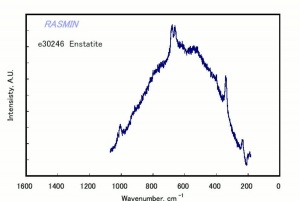Difference between revisions of "Enstatite"
Jump to navigation
Jump to search
| Line 38: | Line 38: | ||
* Gem Identification Lab Manual, Gemological Institute of America, 2016. | * Gem Identification Lab Manual, Gemological Institute of America, 2016. | ||
* Wikipedia: [https://en.wikipedia.org/wiki/Enstatite Enstatite] (Accessed Nov. 2, 2005 and Dec 2022) | * Wikipedia: [https://en.wikipedia.org/wiki/Enstatite Enstatite] (Accessed Nov. 2, 2005 and Dec 2022) | ||
| − | + | * Minerals.net: [https://www.minerals.net/mineral/enstatite.aspx Enstatite] | |
[[Category:Materials database]] | [[Category:Materials database]] | ||
Latest revision as of 15:03, 23 December 2022
Description
A pyroxene mineral composed of magnesium silicate. Enstatite was first described by G.A. Kenngott in 1855. It occurs naturally in metamorphic rocks and meterorites. The mineral is usually a gray, pale green, or brown in color although a gemstone quality emerald green variety occurs rarely. Weathered enstatite can have a metallic luster and is called bronzite. Enstatite can alter to form Steatite. Steatite may also be heated to form enstatite.
Synonyms and Related Terms
bronzite; Enstatit (Deut.); enstatiet (Ned.)
Physical and Chemical Properties
- Orthorhombic crystal system with prismatic crystals commonly lamellar, fibrous or massive
- Cleavage = distinct in two directions
- Fracture = uneven
- Luster = vitreous to pearly
- Streak = gray
- Fluorescence = inert
- Pleochroism = weak to strong; pink to green; green to yellowish green; or brown to yellow
| Composition | MgSiO3 |
|---|---|
| Mohs Hardness | 5 - 6 |
| Density | 3.21-3.96 g/ml |
| Refractive Index | 1.650-1.679 |
| Birefringence | 0.008 - 0.11 |
Resources and Citations
- Gem Identification Lab Manual, Gemological Institute of America, 2016.
- Wikipedia: Enstatite (Accessed Nov. 2, 2005 and Dec 2022)
- Minerals.net: Enstatite




